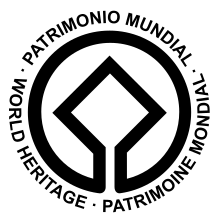List of World Heritage sites in the Philippines
.svg.png)
The UNESCO (United Nations Educational, Scientific and Cultural Organization) has designated six World Heritage sites in the Philippines. The UNESCO World Heritage sites are places of importance to cultural or natural heritage as described in the UNESCO World Heritage Convention.
The Philippines, following its ratification of the convention on Thursday, September 19, 1985, made its historical and natural sites eligible for inclusion on the list. The Philippines had its first sites included in 1993, and since 2014, has six sites on the list spanning nine locations. Of those six sites, three are cultural and three natural. The first 5 sites inscribed in the UNESCO Heritage List was initiated by ICOMOS Philippines, an non-profit heritage organization, which partnered with the UNESCO National Commission of the Philippines and the Heritage Conservation Society.
The Philippines has a cultural inventory, called the Philippine Registry of Cultural Property or PRECUP, and a natural inventory called the National Integrated Protected Areas System or NIPAS. Both of which were established by various Philippine laws. The intangible cultural heritage list of the Philippines is under the PRECUP.
In 2015, the 28 sites in the 'Tentative List' were revised. Currently, the Tentative List for possible nomination in the future contains nineteen submissions.
In November 2017, the Philippines was elected as a member of the Executive Board of UNESCO.[1] In March 2018, the Philippines was elected as Vice President of the Preparatory Group of the Executive Board.[2]
The Philippines is in preparation to make a hosting proposal for a UNESCO Executive Board General Meeting within 2019 to 2021, where its term will end. The Philippines is also in preparation for its candidature as UNESCO Director-General by 2021 or 2025. Heritage conservationists have cited Senator Loren Legarda as the best candidate of the Philippines. The possible candidature is supported by the Southeast Asian bloc and the Latin American bloc, with some degree of support from the United States, Russia, Japan and China.
Nomination process of World Heritage sites
The National Commission for Culture and the Arts and other heritage agencies (National Museum of the Philippines, Department of Environment and Natural Resources, National Historical Commission of the Philippines, and others), are the prime nominators of the Republic of the Philippines, though other entities can nominate sites in the tentative list as well, such as universities and NGOs. The Permanent Delegation of Philippines to UNESCO is also eligible to nominate sites in the tentative list and the world heritage list.
A site can only declared as a UNESCO World Heritage site if and only if they accomplish the nomination procedures mandated by UNESCO.
The Republic of the Philippines first became a committee member from 1991 up to 1997, where 3 UNESCO World Heritage sites in the country were enlisted in heritage list. Its first committee membership also brought the first site declaration in the country and the most site declarations in a given time frame. It became a committee member again from 2011 up to 2017, where only 1 site for the country was declared. The state did not participate heavily in the nomination of its own sites in its second term due to the intention of the government to act as a 'neutral' committee member and to use the time between 2013-2017 as preparation for future nominations. All nominated sites are reviewed by three UNESCO partners, namely, IUCN, ICOMOS, and ICCROM. Between 2016 and 2017, the Philippines formally established three workshops on UNESCO nominations to fill-in the gaps in nomination capabilities of the Philippines to UNESCO and to further enlarge and conserve the heritage list of the Philippines. The government plans to nominate one site annually starting in 2018.
World Heritage sites

In the 1990s, Filipino architect Augusto Villalón represented the Philippines in the UNESCO Committee and drafted the nomination dossiers of 5 heritage inscriptions. All the five inscriptions, which were the first five UNESCO sites in the Philippines, were declared as UNESCO World Heritage sites from 1993 to 1999. These sites include the Baroque Churches of the Philippines (Miag-ao in Iloilo; Paoay in Ilocos Norte; Santa Maria in Ilocos Sur, and San Agustin in Manila); Tubbataha Reef National Park, Puerto Princesa Subterranean River National Park, Historic City of Vigan, and the Rice Terraces of the Philippine Cordilleras[3] After Villalón retired, the country had a 14-year drought in UNESCO World Heritage designations, which would be broken only in 2014, when Mount Hamiguitan Range Wildlife Sanctuary was declared as a UNESCO World Heritage site.[4]
The table lists information about each World Heritage site:
- Name: as listed by the World Heritage Committee
- Location: city or province of site
- Region: one of the 17 regions of the Philippines
- UNESCO data: the year the site was inscribed on the World Heritage List; the criteria it was listed under: criteria i through vi are cultural, while vii through x are natural; (the column sorts by year added to the list)
- Period: time of construction
- Description: brief description of the site
- Ref: references
| Name | Image | Location | Regions | UNESCO data | Period | Description | Ref |
|---|---|---|---|---|---|---|---|
| Baroque Churches of the Philippines: San Agustin Church, Santa Maria Church, Paoay Church, and Miagao Church |  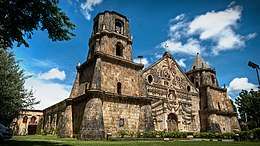 |
City of Manila; Ilocos Sur; Ilocos Norte; Iloilo | Manila; Ilocandia; Western Visayas | 1993 (inscription), 2013 (minor boundary modification); ii,iv | 16th century | All of the four baroque churches have been declared as National Cultural Treasures of the Philippines. | [5] |
| Tubbataha Reefs Natural Park | 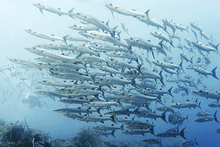 |
Palawan | Mimaropa | 1993 (inscription), 2009 (extension); vii, ix, x | Pleistocene Epoch | The site is one of the New7Wonders of Nature, an ASEAN Heritage Park, and a Ramsar Wetland Site. It is also located within the Palawan UNESCO Biosphere Reserve. | [6] |
| Rice Terraces of the Philippine Cordilleras: Batad, Bangaan, Mayoyao, Hungduan, and Nagacadan |  |
Ifugao | Cordillera | 1995 (inscription); iii, iv, v | 100 BC | The inscription includes 5 properties, namely, Batad Rice Terraces, Bangaan Rice Terraces (both in Banaue), Mayoyao Rice Terraces (in Mayoyao), Hungduan Rice Terraces (in Hungduan) and Nagacadan Rice Terraces (in Kiangan). The terraces have been declared as National Cultural Treasures of the Philippines. | [7] |
| Historic City of Vigan | Ilocos Sur | Ilocandia | 1999 (inscription); ii, iv | 16th century | The site is also one of the New7Wonders Cities. The Mestizo Section, House of Father Jose Burgos and Leona Florentino of Vigan has been declared as one of the National Cultural Treasures of the Philippines. | [8] | |
| Puerto Princesa Subterranean River National Park | 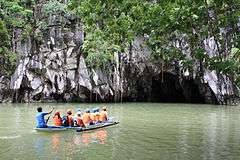 |
Palawan | Mimaropa | 1999 (inscription); vii,x | Pleistocene Epoch | The site is part of the Palawan UNESCO Biosphere Reserve and a declared Ramsar Wetland Site. | [9] |
| Mount Hamiguitan Range Wildlife Sanctuary | Davao Oriental | Davao | 2014 (inscription); x | Pleistocene Epoch | The site is a declared ASEAN Heritage Park. | [10] |
Sites by Philippine regions
Exclusive UNESCO World Heritage Sites refer to sites locating in a single community/region. Shared sites refer to sites with entries in multiple communities/regions, such the Baroque Churches of the Philippines, which is distributed in 3 regions.
| Community | Exclusive sites | Shared sites |
|---|---|---|
| Ilocandia | 1 | 1 |
| Cordillera | 1 | — |
| Cagayan Valley | — | — |
| Central Luzon | — | — |
| Manila | — | 1 |
| Calabarzon | — | — |
| Mimaropa | 2 | — |
| Bicolandia | — | — |
| Western Visayas | — | 1 |
| Central Visayas | — | — |
| Eastern Visayas | — | — |
| Zamboanga | — | — |
| Northern Mindanao | — | — |
| Caraga | — | — |
| Davao | 1 | — |
| Soccsksargen | — | — |
| Bangsamoro | — | — |
Need for a Department of Culture
There have been proposals to establish a policy where each municipality and city will have an ordinance mandating all constructions within each territory to be inclined with the municipality or city's architecture and landscaping styles to preserve and conserve the country's dying heritage sites which have been demolished one at a time in a fast pace due to urbanization and culturally-unresponsible development. Such policies are used by countries which have preserved their architectural marvels for hundreds of years, such as Italy, France, Romania, Germany, and Spain. The proposal advocates both indigenous, colonial, and modern architectural and landscaping styles that are prevalent or used to be prevalent in a given city or municipality. The proposal, however, has yet to be manifested into an actual policy due to the lack of a Department of Culture. Only the city of Vigan has passed such an ordinance, which led to its declaration as a UNESCO World Heritage Site in 1999 and awarding of various recognition for the conservation and preservation of its unique architectural and landscaping styles. In 2016, senator Loren Legarda filed a bill establishing the Department of Culture. The bill was introduced in the Senate in January 2017 and is expected to be passed into law in late 2018 or early 2019. The bill is backed by 9 other senators from different political parties, namely, Bam Aquino, Nancy Binay, Francis Escudero, Juan Zubiri, Joseph Ejercito, Joel Villanueva, Sherwin Gatchalian, Risa Hontiveros, and Sonny Angara. Three counterpart bills that aim to establish a Department of Culture has also been filed in the House of Representatives, authored by Christopher de Venecia, Evilina Escudero, and Jose Antonio Sy-Alvarado. The establishment of a Department of Culture aims to nurture Philippine culture and arts, including the heritage sites of the country, making it easier to nominate properties in the many lists of UNESCO. Filipino conservationists have proposed to add a provision where the Department of Culture shall have a special division or committee that shall focus on the (1) preparation of dossiers and (2) nomination of Filipino elements in the many lists and registers of UNESCO, such as the World Heritage List, UNESCO Intangible Cultural Heritage Lists, Creative Cities Network, and Memory of the World Register, among many others. A provision to establish a committee between the Department of Culture and the Department of Environment and Natural Resources have also been proposed, where the converged committee may discuss dossiers and nominations of sites with both natural and cultural value, notably for the World Heritage List, Creative Cities Network, Biosphere Reserve, and Global Geoparks Network.[11][12]
Tentative list
The following 19 sites are on the Tentative List for the Philippines, meaning that the government intends to consider them for nomination in the future:[13]
| Type (criteria) | Site | Location | Period | Description | Image | Ref |
|---|---|---|---|---|---|---|
| Natural: (vii)(ix)(x) | Apo Reef Natural Park | Sulu Sea | Pleistocene Epoch | The site is the second biggest producer of juvenile marine fishes in the world, next only to the Tubbataha Reefs Natural Park. |  |
[14] |
| Cultural: (i)(iii)(iv)(v)(vi) | Baroque Churches of the Philippines (Extension)
|
Various Locations | 18th to 19th centuries | All five baroque churches have been declared as National Cultural Treasures of the Philippines. | 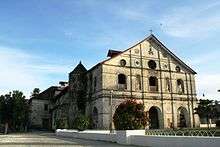 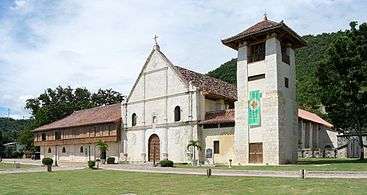 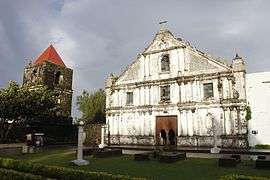 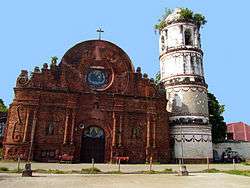 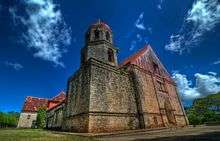 |
[15] |
| Mixed | Batanes Protected landscapes and seascapes | Batanes | Pleistocene Epoch and 100 AD | The Mahatao Church of Batanes is a declared National Cultural Treasure of the Philippines. | 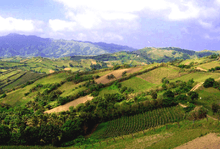 |
[16] |
| Cultural: (iii)(iv)(v) | Butuan Archeological Sites | Agusan del Norte | 10th century | The site exemplified and concretized the capability of the pre-Hispanic Rajahnate of Butuan as a nation with great expertise in boat-making, seafaring, and gold manufacturing. | 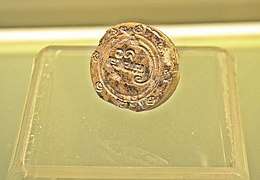 |
[17] |
| Natural: (vii)(viii) | Chocolate Hills Natural Monument | Bohol | Pleistocene Epoch | The site is the focal property of the proposed Bohol Global Geopark Reserve. | [18] | |
| Mixed: (iii)(ix)(x) | Coron Island Natural Biotic Area | Palawan | Pleistocene Epoch | The site is within the Palawan UNESCO Biosphere Reserve. | 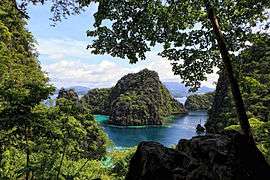 |
[19] |
| Natural: (ix)(x) | El Nido-Taytay Managed Resource Protected Area | Palawan | Pleistocene Epoch | The site is within the Palawan UNESCO Biosphere Reserve. | 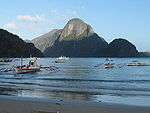 |
[20] |
| Cultural: (i)(ii)(iii)(iv)(v)(vi) | Kabayan Mummy Burial Caves | Benguet | 100 AD | The site has been listed by the World Monuments Fund for immediate international conservation. It is a declared National Cultural Treasure of the Philippines. |  |
[21] |
| Natural: (vii)(x) | Mayon Volcano Natural Park (MMVNP) | Albay | Pleistocene Epoch | The site is the central property of the Albay UNESCO Biosphere Reserve. | 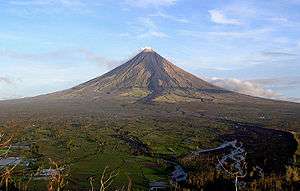 |
[22] |
| Natural: (ix)(x) | Mounts Iglit-Baco National Park | Mindoro | Pleistocene Epoch | The site is a declared ASEAN Heritage Park. | _-_panoramio_(1).jpg) |
[23] |
| Natural: (vii)(ix)(x) | Mount Malindang Range Natural Park | Misamis Occidental | Pleistocene Epoch | The site is a declared ASEAN Heritage Park. | 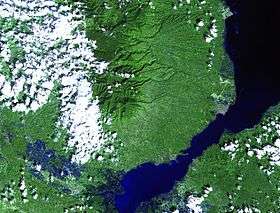 |
[24] |
| Natural: (ix)(x) | Mount Mantalingajan Protected Landscape | Palawan | Pleistocene Epoch | The site is part of the Palawan UNESCO Biosphere Reserve. |  |
[25] |
| Natural: (ix)(x) | Mount Pulag National Park | Ifugao, Nueva Viscaya, and Benguet | Pleistocene Epoch | The site is the third highest point in the Philippines. | 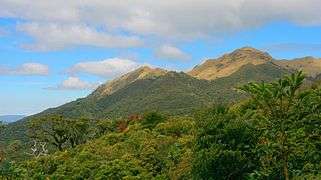 |
[26] |
| Cultural: (ii)(iii)(iv)(v) | Neolithic Shell Midden Sites in Lal-lo and Gattaran Municipalities | Cagayan | Neolithic Period | The site is the largest shell midden zone in the Philippine archipelago. | [27] | |
| Natural: (ix)(x) | Northern Sierra Madre Natural Park and outlying areas inclusive of the buffer zone | Isabela | Pleistocene Epoch | The site is the largest national park in the Philippines. | 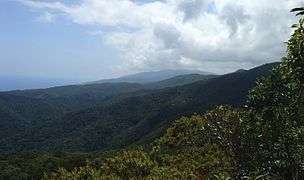 |
[28] |
| Cultural: (ii)(iii)(iv)(v) | Paleolithic Archaeological Sites in Cagayan Valley
|
Cagayan Valley | Paleolithic Period | The site includes the location where the bone fragments of Callao Man, the oldest hominid found in the Philippines was located. | 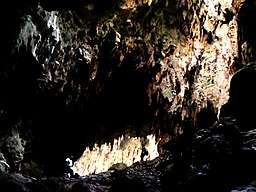 |
[29] |
| Cultural: (iii) | Petroglyphs and Petrographs of the Philippines
|
Multiple locations | Paleolithic Period | The sites in Singnapan, Alab, and Angono have been declared as National Cultural Treasures of the Philippines. The site in Angono has been listed by World Monuments Fund. | 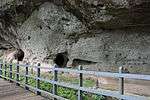 |
[30] |
| Cultural: (ii)(iii)(iv)(v) | The Tabon Cave Complex and all of Lipuun | Palawan | Paleolithic Period | The site is a declared National Cultural Treasure of the Philippines due to the Tabon Man discovery in the area. It was listed by the World Monuments Fund. | [31] | |
| Natural: (ix)(x) | Turtle Islands Wildlife Sanctuary | Tawi-Tawi | Pleistocene Epoch | The site is a major green sea turtle breeding and hatchery zone in the Asia-Pacific. | 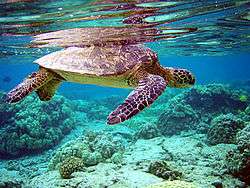 |
[32] |
Tentative sites by Philippine regions
Exclusive UNESCO Tentative Sites refer to sites locating in a single community/region. Shared sites refer to sites with entries in multiple communities/regions, such the Baroque Churches of the Philippines (Extension), which is distributed in 3 regions, and Petroglyphs and Petrographs of the Philippines, which is distributed in 5 regions.
Central Luzon, Zamboanga, and Soccsksargen are the only regions in the Philippines without a UNESCO World Heritage Site or a Tentative Site under the Philippines' Tentative List to UNESCO. Any institution, with the aid of the National Commission for Culture and the Arts, National Museum of the Philippines, Philippine National Commission for UNESCO, or the Department of Environment and Natural Resources, can file a comprehensive nomination of a site for the tentative list in UNESCO. Once a site is at the tentative list, it can finally be selected by UNESCO to undergo a process which would lead to its designation as a UNESCO World Heritage Site.
| Community | Exclusive sites | Shared sites |
|---|---|---|
| Ilocandia | — | — |
| Cordillera | 1 | 2 |
| Cagayan Valley | 4 | 3 |
| Central Luzon | — | — |
| Manila | — | — |
| Calabarzon | — | 1 |
| Mimaropa | 6 | 1 |
| Bicolandia | 1 | — |
| Western Visayas | — | — |
| Central Visayas | 1 | 2 |
| Eastern Visayas | — | 1 |
| Zamboanga | — | — |
| Northern Mindanao | 1 | — |
| Caraga | 1 | — |
| Davao | — | — |
| Soccsksargen | — | — |
| Bangsamoro | 1 | — |
UNESCO-related Activities of the Philippines
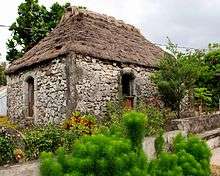
In 2001, the Heritage Conservation Society started its appeal to the officials of Batanes to establish conservation programs for a possible UNESCO inscription. In 2003, the Batanes Protected Landscape and Seascape was nominated by the Philippines to become a World Heritage Site, however, the nomination was deferred by UNESCO due to the lack of conservation in the islands at the time. The site officially was put in deferred status in 2005. In 2007, it was put in referred status, pending for the dossier to be submitted by the local authorities of Batanes. In 2008, all the documents were ready except for the dossier. UNESCO set early 2010 as the deadline for the dossier for site inscription, however, the local officials of Batanes failed to make a dossier, and thus, the site was officially taken out from referred status. Due to this, the process of nomination made in 2003 would be repeated again. This failure led to the focus of the Heritage Conservation Society to focus on Mount Hamiguitan, which became a UNESCO World Heritage Site in 2014. In late 2010, conservationists from the Heritage Conservation Society went to Batanes again and found that non-traditional concrete structures were being established by locals in various sections of the islands, effectively diminishing the site's cultural value. The society appealed to the local government to stop the non-traditional buildings, but the local government lashed out at the society in retaliation. Numerous traditional Ivatan houses were being converted into hollow block houses for the benefit of local politicians. In 2011, the government of Batanes made a late World Heritage bid, but failed due to lack of cultural protections, lack of a holistic dossier, and the establishment of non-traditional buildings which have been approved by the provincial and municipal governments of Batanes at the time. Prompted by failures of past officials, the local governments of Batanes afterwards converged and declared a province-wide cultural and natural conservation program. The National Museum of the Philippines initiated the establishment of a branch museum in the province to preserve Ivatan heritage. The Heritage Conservation Society and National Commission for Culture and the Arts aided the conservation programs led by the Ivatan officials. Once all conservation programs are deemed successful and fulfilled, the Philippines aims to nominate Batanes again within the next decade.[33][34]
In middle of 2011, 26 cultural workers were accepted for the UNITAR Series on the Management and Conservation of World Heritage Sites with a theme of 'Preparing World Heritage Nominations: Continuity and Change within UNESCO's New Manual'. Out of 26 accepted participants, three were Filipinos, namely, Ivan Henares of the Heritage Conservation Society, Florentino Hornedo of the Batanes nomination consultancy group, and Erwin Sebastian of the National Museum of the Philippines. Three factors were cited for the lack of world heritage declarations in the Philippines, namely, (1) the lack of awareness about UNESCO World Heritage among local stakeholders, especially the indigenous communities, local governments and residents that live around these potential sites, (2) the absence of competent people who are fully aware of the processes involved in preparing and providing the correct documents for nomination as World Heritage, and (3) the lack of government funding to prepare and support these nominations, among many others. It was also noted that describing a nominated property as "unique" is the worst argument one could give for UNESCO nomination as all sites are not unique and there are always similar properties it can be compared with. The Outstanding Universal Value (OUV) based on at least one of the ten criteria should be clearly established as well, according to UNESCO. According to UNESCO, the most important part of the nomination is the Comparative Analysis of the site as extensive comparison with other similar properties is vital to prove OUV and push nomination forward. Due to this, the Filipino delegations acknowledged the need to rewrite the dossier for Batanes, as it was rejected before due to many lacking information for an actual nomination to be accepted by UNESCO. Due to these findings, the Philippine government would later establish a world heritage nomination workshop series from 2016 to 2017 for the tentative sites and possible tentative sites of the country.[35] By November 2011, Heritage Conservation Society president Ivan Henares and various cultural experts criticized the plan of the Batangas provincial government to establish a 'Hollywood sign' on top of the Taal Volcano, which at the time was included as a tentative site for UNESCO world heritage site nomination. Henares noted that Taal would lose its credibility to be declared as a UNESCO site if the 'sign' project pushes through. The criticism against the project was further enlarged by social media, and a few days later, the provincial government retracted the proposal.[36]
In 2013, Typhoon Haiyan and the 2013 Bohol Earthquake hit the Central Visayas, damaging numerous heritage sites throughout the region, including sites listed in the Philippine UNESCO Tentative List. In 2014, the faithful restoration of the sites began.
In early 2014, the Lazi Church as a sole site was nominated by the Philippines, however, UNESCO advised the government to prepare a more complete dossier first, including its surrounding heritage structures and domains, making the Old Town of Lazi, Siquijor a UNESCO-recommended site. Representatives of the site were sent to the World Heritage and Bioshpere Reserve Nomination Workshop in July 1 – 4 in Vigan City, Ilocos Sur for proper dossier making. The dossier for the site has yet to be completed by the local government unit and the national government. Similar dossiers are being finished by other baroque churches in the country. Once complete, the extension nomination for the Baroque Churches of the Philippines can commence in Paris.[37] Afterwards, the National Commission for Culture and the Arts launched the Sagisag Kultura, a long-term cultural mapping program that lists and discusses the cultural icons of the Philippines, both intangible and tangible, living and non-living. The program has listed more than 2,000 cultural icons, all of which are accessible to the public and can be downloaded at the commission's website for reference and study.[38] In late 2014, the idea to nominate the Manila-Acapulco Galleon Trade Route was initiated by the Mexican ambassador to UNESCO with the Filipino ambassador to UNESCO.
In March 20, 2015, the UNESCO Tentative List of the Philippines was fully revised after recommendations from the UNESCO itself. The original Tentative List before the March 2015 Revision enlisted 28 sites. Many of the sites removed from the list were sites hit by Typhoon Haiyan and the Bohol Earthquake in 2013. The country announced that it shall revitalize the sites removed from the tentative list first before those sites can be re-submitted in the future. In October 2015, the National Commission for Culture and the Arts announced through their official Instagram account that they shall nominate the Sugar Centrals of the Philippines and related properties of Negros Occidental to the World Heritage List in the near future. Though the site has yet to be entered in the tentative list.
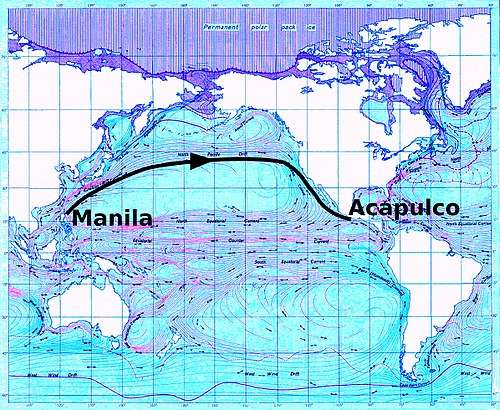
An Experts' Roundtable Meeting was held at the University of Santo Tomas (UST) on April 23, 2015 as part of the preparation of the Philippines for the possible transnational nomination of the Manila-Acapulco Galleon Trade Route to the World Heritage List. The nomination will be made jointly with Mexico. The meeting focused on the tornaviaje, shipyards in the Bicol region, underwater archaeology, maps and cartography, fortifications in the Philippines, food, textile, and historical dimension. The papers presented and discussed during the roundtable meeting will be synthesized into a working document to establish the route's outstanding universal value.[39] The Mexican side reiterated that they will also follow suit with the preparations for the route's nomination. Spain has also backed the nomination of the route in the World Heritage List and has also suggested the archives related to the route under the possession of the Philippines, Mexico, and Spain to be nominated as part of another UNESCO list, the Memory of the World Register.[40]
In August 2015, the Philippine Heritage Map, also known as the Philippine Inventory of Cultural Properties and Historic Events, was launched by Arches, Getty Conservation Institute, and World Monuments Fund, in cooperation with the National Commission for Culture and the Arts, National Museum of the Philippines, and the National Historical Commission of the Philippines. The map is constantly being updated and has aided in the cultural conservation of numerous sites throughout the country.[41] In early 2016, the Heritage City of Malolos was cited by cultural experts as a site with huge potential to become a UNESCO World Heritage site in the future. However, no organization has yet pushed for the inclusion of the heritage city in the UNESCO tentative list.[42]
In March 2016, the Heritage Conservation Society appealed to numerous sugar central site owners in the Philippines to preserve their respective heritage sugar mills and other structures, especially those in Negros island and Pampanga province.[43] In September 2016, the Heritage Conservation Society announced that the Negros Sugar Heritage Sites are now in the process of making a dossier. The society identified at least 6 heritage clusters so far. Once the dossier is complete, the society intends to formally message the Philippine National Commission to UNESCO so that the site can be added in the tentative list, making the site eligible for UNESCO nomination. The society noted that it will take several years for the nomination to be finalized, as it was the normal timeline for a World Heritage inclusion.[44]
In 14–15 April 2016, the first leg of the Pamana {Heritage) Workshop of the Philippine government was administered in Puerto Princesa, Palawan. The second leg was administered on 15–16 September 2016 in Mati, Davao Oriental. The third and last leg was administered in Legaspi City, Albay on 23–24 March 2017. During the three Pamana Workshops, the government undertook UNESCO conferences to prepare the dossiers of the 19 existing UNESCO tentative sites in the country, notably Mayon Natural and Cultural Landscape, Coron Natural Biotic Area, Mount Mantalingahan Protected Landscape, and the Chocolate Hills Natural Monument. The government also invited the administrators of sites not included yet in the tentative list. The government plans to nominate Filipino sites in the UNESCO World Heritage List, UNESCO Lists of Intangible Cultural Heritage, UNESCO Memory of the World Register, and the UNESCO Man and Biosphere Reserve by 2018, while acknowledging the fact that the UNESCO declaration of Filipino nominations may take more time to be recognized by the organization, as traditionally, nominations don't get declared as UNESCO sites or elements on the exact year of nomination.[45][46] In June 2016, Heritage Conservation Society president Ivan Henares, with aid from the US embassy, successfully initiated the cultural-tourism program for the Agusan Marsh Wildlife Sanctuary, which benefits the indigenous communities of the site. The program was part of a series of projects aimed to revitalize the sanctuary's outstanding universal value, so that it may be eligible for re-submission in the UNESCO tentative list, as it was removed from the list in 2015 due to negative effects of the 2013 catastrophes that hit the area.[47] In August 2016, the Gabaldon-style Schools of the Philippines were cited as potential UNESCO sites.[48] In November 2017, University of the Philippines School of Urban and Regional Planning (UP-SUPR) Professor Mario delos Reyes, along with other proponents, announced that the entire island of Bohol is in the process of being nominated as a UNESCO Global Geopark. The university named Hinagdanan Cave, Maribojoc Uplift, Inabanga Wall, and the Chocolate Hills as the focal properties of the Bohol Global Geopark. The Chocolate Hills in Bohol is currently in the tentative list for UNESCO world heritage sites. The university also noted that they have made explorations on the geology of Puerto Princesa Underground River, Ilocos Sand Dunes, Taal Seascape, and other geo-areas that may be declared as Global Geoparks in the future. The university pointed that it aims to have Bohol be declared as the first UNESCO Global Geopark in the Philippines. Once declared, Bohol's geology will be protected by UNESCO, and the Chocolate Hills Natural Monument will have a better chance to be declared as a UNESCO World Heritage site.[49]
In February 2018, majority of the sites that were damaged or completely destroyed during the 2013 central Viasayas earthquake and super typhoon Haiyan were restored to their original state using advance technology that made it possible to restore the sites in the most faithful way possible, effectively preserving the outstanding universal value of the sites.[50] The National Commission for Culture and the Arts also initiated a program to 3D laser scan all UNESCO cultural World Heritage Sites in the country as preparation for disasters in the future, so that reconstruction of the sites can be as faithful to the original as possible, if disaster strikes again. The program for world heritage site 3-D scanning will end in March 2018, but the commission aims to further the program to include sites not yet listed as World Heritage Sites, especially those within fault lines such as Metro Manila, Negros, Cebu, Bohol, Northern Mindanao, and the Cordilleras.[51] In March 2018, the country of Georgia formally nominated five of its sites for UNESCO world heritage site designations, prompting international conservationists, including Filipinos, to study Georgia's move. If UNESCO approves all of the five sites as UNESCO sites, it will be an unofficial welcome from UNESCO for countries to nominate more than one site per year, making the Philippines more viable to nominate numerous sites per year.[52]
In May 13, 2018, it was announced that Mount Mantalingahan Protected Landscape in southern Palawan will formally undergo UNESCO's hectic process in administering its possible declaration as a world heritage site by 2020. Initially, Albay's Mayon Volcano was also set for declaration by 2020, but did not make the cut after government failed to submit the documents for Mayon Volcano on time.[53] In September 24, 2018, it was announced that a week prior, the top officials of all provinces surrounding the Verde Island Passage, namely Batangas, Oriental Mindoro, Occidental Mindoro, Romblon, and Marinduque, convened for the first time in history to push for the declaration of the passage as a UNESCO World Heritage site. The Verde Island Passage is known in the international scientific community as the "center of the center of marine shore fish biodiversity in the world" after research was concluded by the Smithsonian Institute.[54]
Current members of the UNESCO–Philippine National Commission
.jpg)
The Philippine National Commission for UNESCO (PH NatCom) was established by law (R.A 621 in 1951, amended by R.A. 892 in 1953 and R.A. 3849 in 1964) to honor the Philippines’ international commitment to UNESCO. The following are the current members of the commission since 2017 under the new administration of Rodrigo Duterte:
- UNESCO-Philippine National Commission Secretray-General Lila Ramos-Shahani
- National Commission for Culture and Arts chair Virgilio S. Almario
- Education Secretary Leonor Briones
- Foreign Affairs Secretary Alan Peter Cayetano
- Technical Education and Skills Development Authority director-general Guiling Mamondiong
- Philippine Institute of Volcanology and Seismology (Phivolcs) chair Renato Solidum Jr.
- Commission on Higher Education commissioner Prospero De Vera III
- Presidential Communications Secretary Martin Andanar
- Information and Communications Technology undersecretary Denis Villorente
- Science and Technology Secretary Fortunato dela Peña
- Social Welfare and Development undersecretary Florita Villar
- National Economic and Development Authority (NEDA) deputy director general Rosemarie Edillon
- Department of Tourism director Verna Buensuceso.
- Non-government Representative Elena Enriquez Pernia[55][56]
The current ambassador extraordinary & plenipotentiary and permanent delegate of the Philippines to UNESCO (in Paris, France) is H. E. Ms Maria Theresa P. Lazaro.[57]
Overall inscriptions in UN Heritage lists
| UNESCO List | Exclusive Entries of the Philippines | Shared/Multinational Entries Involving the Philippines | Total National Inscriptions | Last Inscription | Southeast Asia Inscription Average | World Inscription Average |
|---|---|---|---|---|---|---|
| UNESCO World Network of Biosphere Reserves | 3 | — | 3 | 2016 | 4 | 6 |
| UNESCO World Heritage List | 6 | — | 6 | 2014 | 4 | 10 |
| UNESCO Memory of the World Register | 4 | — | 4 | 2011 | 4 | 5 |
| UNESCO Global Geoparks Network | (Not yet a member) | — | — | — | 1 | 3 |
| UNESCO Creative Cities Network | 1 | — | 1 | 2016 | 1 | 1 |
| UNESCO Intangible Cultural Heritage Lists | 2 | 1 | 3 | 2015 | 3 | 6 |
| Ramsar Wetlands of International Importance List | 7 | — | 7 | 2016 | 8 | 12 |
Sites Proposed to the Tentative List
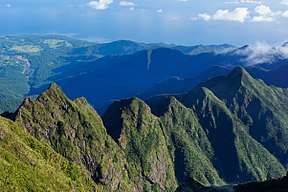
(2018-02-25).jpg)

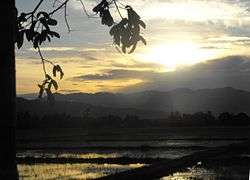
.jpg)
[°] indicates that the site has been considered by the National Commission for Culture and the Arts and/or the Department of Environment and Natural Resources to be included in the country's tentative list in the future once a dossier for the site has been completed.
Various regions
- [°]Intramuros and Other Spanish Colonial Fortifications of the Philippines
- Gabaldon School Buildings
- Major World War II sites in the Pacific: Corregidor Island, Leyte Gulf, Bataan Death March Route (multi-national)
- Philippine Trench Conserved Area and outlying maritime zones
- Spratly Islands Conservation Area (multi-national)
- [°]Manila-Acapulco Galleon Trade Route
- Petroglyphs and Petrographs of the Philippines - Extension
- 9th-20th Century Cemeteries of the Philippines, necrological cultural landscapes
- Historic Railways of the Philippines
- Historic Lighthouses in the Philippines
- Heritage Buddhist Temples of the Philippines
- Heritage Dambanas of the Philippines
- Historic sites related to People Power Revolutions
Luzon
- Babuyan Islands Protected Landscape and Seascape
- [°]Heritage City of Baguio
- Igorot Vernacular Villages
- [°]Heritage Cities of Sariaya and Tayabas
- [°]Heritage Town of Taal
- Buenavista Protected Landscape and the Limestone tombs of Kamhantik
- [°]Rice Terraces of the Philippine Cordilleras - Extension
- Ticao Cultural Landscape and Seascape
- Sagada Cultural Landscape
- Oriental Laguna Cultural Landscape
- Historic Town Centres of Bicolandia
- Historic Town Centres of the Cagayan Valley
- Historic Town Centres of the Cordilleras
- Historic Town Centres of Central Luzon
- Historic Town Centres of Ilocandia and Pangasinan
- Historic Town Centres of Manila and outlying cities and municipality
- Historic Town Centres of Calabarzon
- Heritage Mosques of Luzon
- Maritime and Geologic features of the Philippine (Benham) Rise
- Lubang Island, including its 6 outlying biodiversity islands
Visayas
- Heritage Town of Capul
- Banton Cultural Landscape
- [°]Negros Sugar Central Sites
- Sibuyan Key Biodiversity Area
- Central Panay Mountain Range including the Antique Rice Terraces
- Heritage City of Iloilo
- Early Pacific contact sites between the East and the West: Homonhon, Poro, Mactan, and Limasawa
- Heritage City of Dumaguete
- Cuyo Archipelago Cultural and Natural Scenic Area
- Balabac Archipelago Key Biodiversity Area
- Sohotan Natural Park and the Cave Systems of Samar
- Historic Town Centres of Mimaropa
- Historic Town Centres of Panay and Guimaras
- Historic Town Centres of Negros
- Historic Town Centres of Central Visayas
- Historic Town Centres of Eastern Visayas
- Heritage Mosques of the Visayas
Mindanao
- [°]Allah Valley Cultural Landscape
- Lumad Vernacular Villages
- Sibutu-Sitangkai Cultural and Natural Landscape and Seascape
- Dinagat Islands Key Biodiversity Area
- Torogan Royal Abodes of Lanao
- Agusan Marsh Wildlife Sanctuary
- Anthropomorphic Jar Caves of Greater Cotabato (Soccsksargen and Maguindanao)
- Camiguin Scenic Area
- Heritage City of Zamboanga
- Heritage Cities of Dapitan and Dipolog
- Historic Centres of Northern Mindanao
- Historic Centres of Caraga
- Historic Centres of Davao
- Historic Centres of Soccsksargen
- Historic Centres of Bangsa Moro (mainland Mindanao)
- Historic Centres of Zamboanga Peninsula
- Historic Centres of Bangsa Sug (Sulu archipelago)
- Heritage Mosques of the Sulu Archipelago
- Heritage Mosques of Mainland Mindanao
East Sabah (claimed)
See also
- Culture of the Philippines
- Architecture of the Philippines
- Philippine Registry of Cultural Property
- List of protected areas of the Philippines
- List of Ramsar sites in the Philippines
- Biosphere reserves of the Philippines
- Archaeology of the Philippines
- Intangible Cultural Heritage of the Philippines
- Lists of Cultural Properties of the Philippines
- National Commission for Culture and the Arts
- Tourism in the Philippines
- List of national parks of the Philippines
- List of mosques in the Philippines
References
- ↑ Caleb Velasquez (2017-11-09). "Philippines wins bid for seat in UNESCO Executive Board - Update Philippines". Update.ph. Retrieved 2018-01-13.
- ↑ https://news.mb.com.ph/2018/03/22/ph-envoy-elected-vp-of-unesco-board/
- ↑ http://lifestyle.inquirer.net/293463/augusto-villalon-architect-heritage-advocate-passes-away/
- ↑ https://whc.unesco.org/en/list/1403
- ↑ UNESCO World Heritage Centre. "Baroque Churches of the Philippines - UNESCO World Heritage Centre". Whc.unesco.org. Retrieved 2018-01-13.
- ↑ UNESCO World Heritage Centre. "Tubbataha Reefs Natural Park - UNESCO World Heritage Centre". Whc.unesco.org. Retrieved 2018-01-13.
- ↑ UNESCO World Heritage Centre. "Rice Terraces of the Philippine Cordilleras - UNESCO World Heritage Centre". Whc.unesco.org. Retrieved 2018-01-13.
- ↑ UNESCO World Heritage Centre. "Historic City of Vigan - UNESCO World Heritage Centre". Whc.unesco.org. Retrieved 2018-01-13.
- ↑ UNESCO World Heritage Centre. "Puerto-Princesa Subterranean River National Park - UNESCO World Heritage Centre". Whc.unesco.org. Retrieved 2018-01-13.
- ↑ UNESCO World Heritage Centre. "Mount Hamiguitan Range Wildlife Sanctuary - UNESCO World Heritage Centre". Whc.unesco.org. Retrieved 2018-01-13.
- ↑ "17th Congress - Senate Bill No. 1528 - Senate of the Philippines". Senate.gov.ph. Retrieved 2018-01-13.
- ↑ "House of Representatives". Congress.gov.ph. Retrieved 2018-01-13.
- ↑ "Tentative Lists: Philippines". UNESCO. Retrieved 28 March 2012.
- ↑ "Apo Reef Natural Park – UNESCO World Heritage Centre". whc.unesco.org. Retrieved 24 July 2017.
- ↑ "Baroque Churches of the Philippines (Extension) – UNESCO World Heritage Centre". whc.unesco.org. Retrieved 24 July 2017.
- ↑ "Batanes Protected landscapes and seascapes – UNESCO World Heritage Centre". whc.unesco.org. Retrieved 24 July 2017.
- ↑ "Butuan Archeological Sites – UNESCO World Heritage Centre". whc.unesco.org. Retrieved 24 July 2017.
- ↑ "Chocolate Hills Natural Monument – UNESCO World Heritage Centre". whc.unesco.org. Retrieved 24 July 2017.
- ↑ "Coron Island Natural Biotic Area – UNESCO World Heritage Centre". whc.unesco.org. Retrieved 24 July 2017.
- ↑ "El Nido-Taytay Managed Resource Protected Area – UNESCO World Heritage Centre". whc.unesco.org. Retrieved 24 July 2017.
- ↑ "Kabayan Mummy Burial Caves – UNESCO World Heritage Centre". whc.unesco.org.
- ↑ "Mayon Volcano Natural Park (MMVNP) – UNESCO World Heritage Centre". whc.unesco.org. Retrieved 24 July 2017.
- ↑ "Mt. Iglit-Baco National Park – UNESCO World Heritage Centre". whc.unesco.org. Retrieved 24 July 2017.
- ↑ "Mt. Malindang Range Natural Park – UNESCO World Heritage Centre". whc.unesco.org. Retrieved 24 July 2017.
- ↑ "Mt. Mantalingahan Protected Landscape – UNESCO World Heritage Centre". whc.unesco.org. Retrieved 24 July 2017.
- ↑ "Mt. Pulag National Park – UNESCO World Heritage Centre". whc.unesco.org.
- ↑ "Neolithic Shell Midden Sites in Lal-lo and Gattaran Municipalities – UNESCO World Heritage Centre". whc.unesco.org. Retrieved 24 July 2017.
- ↑ "Northern Sierra Madre Natural Park and outlying areas inclusive of the buffer zone – UNESCO World Heritage Centre". whc.unesco.org. Retrieved 24 July 2017.
- ↑ "Paleolithic Archaeological Sites in Cagayan Valley – UNESCO World Heritage Centre". whc.unesco.org. Retrieved 24 July 2017.
- ↑ "Petroglyphs and Petrographs of the Philippines – UNESCO World Heritage Centre". whc.unesco.org. Retrieved 24 July 2017.
- ↑ "The Tabon Cave Complex and all of Lipuun – UNESCO World Heritage Centre". whc.unesco.org. Retrieved 24 July 2017.
- ↑ "Turtle Islands Wildlife Sanctuary – UNESCO World Heritage Centre". whc.unesco.org.
- ↑ https://beta.philstar.com/headlines/2011/02/09/655400/batanes-bids-unesco-heritage-site-nod
- ↑ http://www.ivanhenares.com/2010/03/batanes-heritage-in-danger.html
- ↑ http://www.ivanhenares.com/search?q=unesco
- ↑ http://newsinfo.inquirer.net/80199/eruption-of-ridicule-greets-batangas-signage-plan
- ↑ http://www.philippinestoday.net/archives/14678
- ↑ http://www.gmanetwork.com/news/video/stateofthenation/217370/cultural-mapping-inilunsad-ng-ncca-/video/
- ↑ "PH, Mexico push to nominate Manila-Acapulco Galleon Trade Route to World Heritage List". Official Gazette of the Republic of the Philippines. 28 April 2015. Archived from the original on 14 October 2016. Retrieved 14 December 2017.

- ↑ http://www.philstar.com/headlines/2015/07/05/1473367/spain-backs-inclusion-galleon-trade-route-world-heritage-list
- ↑ https://www.philippineheritagemap.org/index.htm
- ↑ http://lifestyle.inquirer.net/230187/malolos-kamestisuhan-could-rival-vigans-mestizo-district-as-heritage-site/
- ↑ http://newsinfo.inquirer.net/773638/preserve-old-sugar-mill-property-developer-urged
- ↑ https://thedailyguardian.net/negros/negros-sugar-heritage-sites-up-for-unesco-nomination/
- ↑ http://www.unesco.gov.ph/ph-natcom-holds-3rd-leg-of-the-pamana-workshop-series/
- ↑ http://bicol-u.edu.ph/bu/thebuzzette/news/buOFJqlvq1ljY
- ↑ http://lifestyle.inquirer.net/230651/manobo-group-in-agusan-rediscovers-identity-pride-in-place/
- ↑ http://lifestyle.inquirer.net/236509/gabaldon-school-building-in-bauan-batangas-faces-demolition/
- ↑ http://pia.gov.ph/index.php/news/articles/1002270
- ↑ http://www.gmanetwork.com/news/news/regions/644861/baclayon-church-in-bohol-fully-restored-reopened/story/
- ↑ http://www.interaksyon.com/filipino-specialists-in-3d-laser-scanning-take-a-swipe-at-preserving-unesco-world-heritage-sites/
- ↑ http://agenda.ge/news/95779/eng
- ↑ https://www.pressreader.com/philippines/palawan-news/20180513/281706910325751
- ↑ http://www.pna.gov.ph/articles/1048958
- ↑ http://www.gmanetwork.com/news/news/nation/634967/duterte-appoints-up-masscomm-dean-to-unesco-phl-commission/story/
- ↑ https://news.mb.com.ph/2017/03/21/duterte-appoints-andanar-briones-as-new-members-of-unesco/
- ↑ http://www.unesco.org/new/en/unesco/worldwide/asia-and-the-pacific/Philippines/
External links

